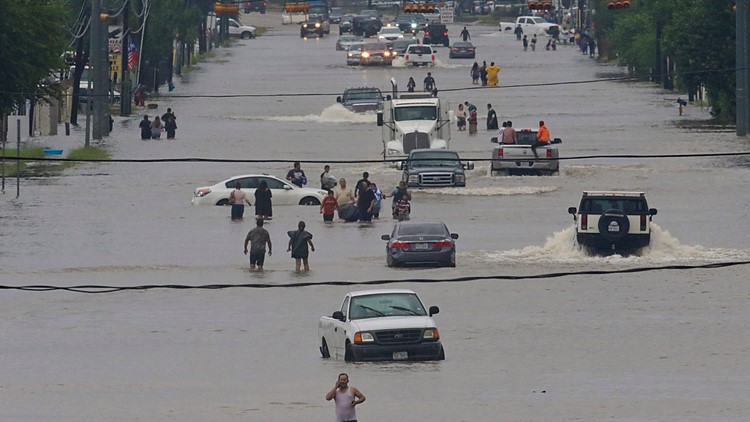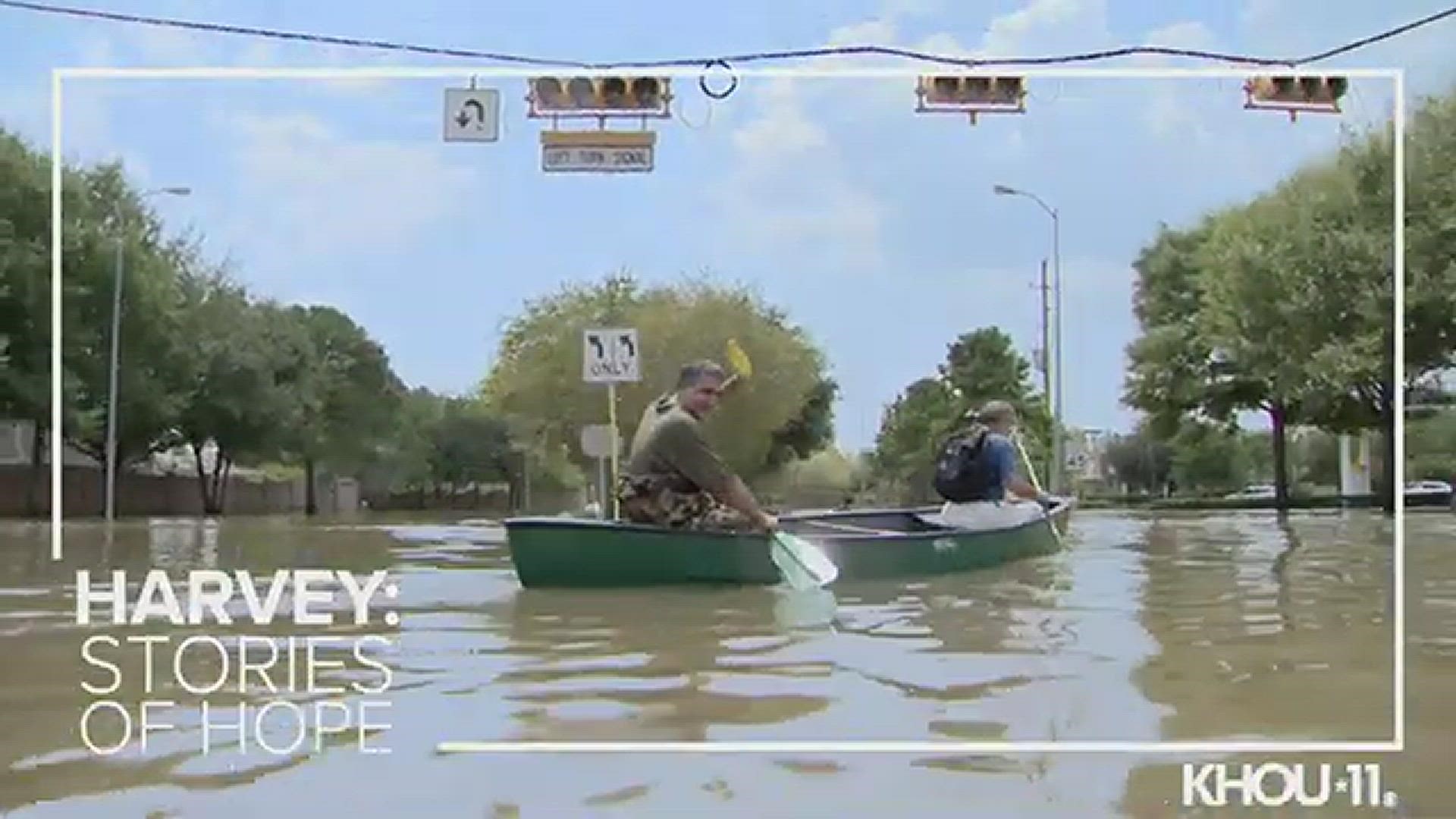HOUSTON - It's been one year since Hurricane Harvey slammed the Gulf Coast, devastating communities and forcing Texans to rebuild with many of them still trying to do so today.
Harvey made landfall near Rockport on Friday, Aug. 25, 2017, as a Category 4 storm with winds around 130 mph. Since then, it dumped more than 60 inches of rain in southeast Texas and caused historic, catastrophic flooding.
According to the Harris County Flood Control District’s final report on Hurricane Harvey, all 4.7 million people in the county were impacted – either directly or indirectly – by the storm. Harvey caused $125 billion in damage, making it the second-costliest hurricane in American history, according to the report.
Below is a timeline of Hurricane Harvey's events:
Sunday, Aug. 13
A tropical wave emerges off west coast of Africa and merges with area of low pressure near the Cabo Verde Islands, then heads west over Atlantic Ocean.
Thursday, Aug. 17
The National Hurricane Center begins issuing advisories on Tropical Depression 9. By Thursday afternoon, the storm becomes Tropical Storm Harvey and heads for the Windward Islands.
Harvey forms and it's heading toward Belize simliar to Franklin 7 days ago. No longer forecast to become a hurricane pic.twitter.com/qQLMLBs2zm
Friday, Aug. 18
Tropical Storm Harvey passes over the Windward Islands with maximum sustained winds of 40 mph, then it enters the eastern Caribbean Sea.
Saturday, Aug. 19
Harvey weakens to a tropical depression. It eventually weakens to a tropical wave.
Tuesday, Aug. 22
Remnants of Hurricane Harvey move across the Yucatan Peninsula.
Wednesday, Aug. 23
By 10 a.m., Harvey reforms into a tropical depression. By 11 p.m., Harvey strengthens to a tropical storm and is forecast to make landfall somewhere over the Texas coast. Texas Gov. Gregg Abbott preemptively declares a state of disaster for 30 Texas counties.
Thursday, Aug. 24
By noon, Harvey strengthens to a Category 1 hurricane with 80 mph winds.
Friday, Aug. 25
By midnight, Harvey strengthens to a Category 2 hurricane with maximum sustained winds estimated at 100 mph.
By 2 p.m., Harvey strengthens to a Category 3 hurricane with maximum sustained winds near 120 mph.
By 6 p.m., Harvey intensifies to a Category 4 hurricane with maximum sustained winds at 130 mph. As it slowly approaches the coast, the National Weather Service in Corpus Christi issued a rare Extreme Wind Warning, which is issued for landfalling major hurricanes with 115 mph or higher winds.
By 10 p.m., the eye of Harvey makes landfall on San Jose Island, then near Rockport. Rockport and Fulton took a direct hit from Harvey's eyewall, damaging and destroying several businesses and residences. Significant structural damage also occurred in coastal towns like Port Aransas, Aransas Pass, Port Lavaca, Copano Village and Ingleside.
Saturday, Aug. 26
By 1 a.m., Harvey makes its second landfall on Copano Bay and is downgraded to a Category 3 hurricane with winds of 125 mph.
By 7 a.m., 24-hour rainfall amounts indicate widespread 10- to 15-inch rainfall amounts (with isolated plus-15 inch-amounts) fell over parts of San Patricio, Refugio and Aransas counties.
By 1 p.m., Harvey weakens to a tropical storm, and Gov. Greg Abbott adds 20 Texas counties to his disaster proclamation.
Sunday, Aug. 27
Harvey moves slowly southeast toward the Houston area, prompting flooding emergencies throughout southeast Texas. Gov. Abbott requests 12 additional counties be added to his presidential disaster declaration and adds 4 more counties to the state disaster declaration.
By 7 a.m., KHOU started taking on water and moved to the second floor of the building. Employees evacuated just before 9 a.m.
By 10:30 a.m., KHOU 11 News reporter Brandi Smith and photographer Mario Sandoval were holding down the broadcast as employees evacuated the KHOU building. They helped flag down law enforcement who rescued a truck driver stuck in the floodwaters.
Monday, Aug. 28
Harvey’s center moves into the Gulf of Mexico with winds of 45 mph. Rain and flooding continues in southeast Texas with tropical storm and storm surge warnings extending to Louisiana. Gov. Abbott visits Coastal Bend and activates the entire Texas National Guard.
Tuesday, Aug. 29
Flooding continues and extends into southwestern Louisiana.
Wednesday, Aug. 30
Tropical Storm Harvey makes its third landfall just west of Cameron, La., before weakening to a tropical depression. Far east Texas and western Louisiana see flooding rains, and Gov. Abbott requests 14 additional counties be added to his presidential disaster declaration.
Thursday, Aug. 31
The National Hurricane Center stops tracking Harvey's remnants. Gov. Abbott increases the National Guard deployment to 24,000. Gov. Abbott and Vice President Mike Pence visit Rockport and Victoria.



